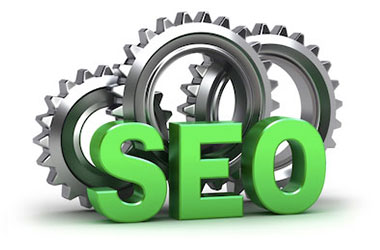Top 10 tips for improving SEO
Updated 2022. Posted November 2014 | By Farzana Irani, Web Consultant at iAdControl.com
1. SEO keywords research
Write down 5 to 10 top keywords with long tail keywords that you think people will search for to find your business online, then order the 3 to 5 relevant keywords for each page. Use these popular keywords in your website content, blogs and when sharing on social media. Set up Google My Business profile, this will help provide more visibility on Google Local search.
2. Page title tags
Relevant page titles are important for SEO. These page titles are displayed on Search Engine Results Pages (SERPs) and act as micro ads, which encourage visitors to click through to your website. Ensure your page titles contain the most important keywords/phrases first and are unique per page. This will also display when content is shared on social media. Use ideally between 50 and 60 characters, including spacing. Character limits are subject to change.
3. Meta descriptions
Have you optimised your website page descriptions, and are they different for every page? This is an important part of the on-page SEO implementation as it will display on search results, same as page title tags. Meta descriptions are not visible on actual websites. Use ideally between 70 and 155 characters, including spacing. Character limits are subject to change.
4. Headings (H1, H2, H3...)
Are you using one H1, and are H2s, H3s correctly ordered? Correctly defined headings aid web accessibility and are quite important for SEO. H1 should contain primary keywords/phrases researched in point 1, and then subsequently H2 will have secondary keywords and so forth in context to content underneath. Use up to 70 characters. Relevant headings also help people using assistive technology. Character limits are subject to change.
5. Image alt texts and file names
Are all your website images’ height and width defined? Omitting height and width attributes means page text jumps about when images load. Is the image the same size as the actual source file? Minimize the size of the images so your website loads quicker. Do they have meaningful alt text to improve web accessibility and SEO? Alt tags are short for alternative tags. Also, when the Internet is not working properly, sometimes the image won’t load, but the alt text will display instead. Ensure all image naming conventions are relevant as this will increase image search results. Restrict to 120 characters or less, including spacing. Character limits are subject to change.
6. Internal links and URL formatting
Well-defined links enhance SEO and web accessibility. Ensure you do not use underscores in URLs as Google recognises hyphens as word separators, but underscores are not counted in the same way. Also ensure page file names have keywords in relation to the content of the page. Having incorrect URL naming conventions can hinder the performance in SERPs. Links on your pages should be as descriptive as possible; avoid ‘click here’ and ‘find out more’ so the user understands exactly where they are navigating to with the link text alone. You should cross-link internal pages throughout your website; this can help rank web pages that are less popular, and visitors are more likely stay on your website longer.

7. Content and User Experience (UX)
Implementing content in a structure that's comprehensible and searchable is critical for SEO. Websites that are updated regularly are also crawled by search engines more often. Valuable content, and user experience is paramount, therefore, it is important you have content posted on your website regularly. This is a good way to boost your SEO strategy and in turn attracting relevant visitors. As long as it has quality content, the information is useful and has significant purpose for the end user, otherwise, it may be considered as spam.
8. Sitemap.xml
Your website must have an XML sitemap as it ensures your website is seen to be as Google-friendly as possible. The sitemap lists all the URLs on your website and allows search engines to crawl websites more intelligently. This also includes additional information such as the latest updates and frequency of changes.
9. Robots.txt
It is important your website has a robots.txt file. This restricts the access of search engine robots that crawl websites and prevents these robots from accessing particular directories/pages you don’t want them to see.
10. External links/link building (backlinks)
External linking to a few high authority and trusted websites may give the popularity of their website some significance to your website. Search engines treat link building as a vote for popularity; it simply means, if credible websites are linking back, search engines will associate more importance to your website too. Link building has changed in recent years to the extent that earning quality links has far more value than buying links.
![]() Download the Top 10 Tips For Improving Search Engine Optimisation.
Download the Top 10 Tips For Improving Search Engine Optimisation.
Read our digital blogs...
WordPress Plugins and SEO tips
How SEO and Web Accessibility crossover
